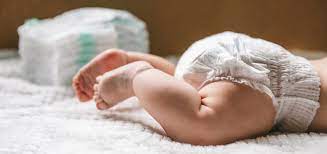Source: Link Testing Instruments Co.,Ltd.
Diapers are commonly used daily necessities for babies. Dry diapers can keep babies sleeping all night. Because of their strong water absorption, they are commonly known as "diapers". Diapers are generally divided into three main components, the surface cover layer, the absorbent core layer and the base fabric. According to the different functions of the three components, the materials used are also different: the surface coating layer is mostly made of non-woven fabrics in order to promote the rapid penetration of urine and effectively prevent re-seepage; the absorbent core layer is the key component of diapers. Mainly composed of pure wood pulp and superabsorbent resin, its function is to quickly absorb urine, disperse urine or diffuse urine into the entire core layer through capillary action, and finally absorb and store urine; the bottom cloth is the most important part of diapers. The outer layer is mainly used for ventilation and leakage prevention. In China, polyethylene PE film is mainly used, and non-woven fabrics have been used abroad.

This article describes the importance of moisture permeability to diapers by introducing the moisture permeability test of diapers. If the moisture permeability of the outer PE film of the diaper is poor, it is easy to cause the diaper to leak, and the baby's buttocks cannot be guaranteed to be dry, thus causing the baby to appear red. Butt, eczema, etc. Therefore, diaper manufacturers should strengthen regular monitoring of the moisture permeability of the outer PE film of diapers.
Test methods and instruments
At present, the Chinese test methods for the water vapor transmission rate of flexible plastic packaging include weighing method (cup method), electrolysis method, humidity method and infrared sensor. The reference method standards are GB 1037-1988 "Plastic Film and Sheet Water Vapor Permeability Test Method Cup Method, GB/T21529-2008 Determination of Water Vapor Permeability of Plastic Films and Sheets - Electrolytic Sensor Method, GB/T30412-2013 Water Vapor Permeability of Plastic Films and Sheets Moisture Sensor Method for Determination of Rate", GB/T 26253-2010 "Infrared Detector Method for Determination of Water Vapor Transmission Rate of Plastic Films and Sheets". The standard referenced in this article is GB 1037-1988 "Cup Method for Test Methods of Water Vapor Permeability of Plastic Films and Sheets".
The testing equipment used in this test is Link Testing LTWTC-203H water vapor transmission rate tester.
Test principle: This equipment is developed using the weighing method test principle. During the test, the sample is clamped in a moisture-permeable cup, and a certain humidity difference is formed on both sides of the sample. Under the action of the humidity difference, water vapor will penetrate from the high-humidity side through the sample to the low-humidity side. Wet cup weight changes with time can be measured, and parameters such as water vapor transmission rate of the sample can be obtained.
Test samples and test procedures
Test sample: diapers provided by a company.
Experimental procedure:
(1) Cut out 3 samples with a diameter of 74 mm from the surface of the sample.
(2) Clamp the samples in 3 permeable cups respectively, then place them on the permeable cup brackets inside the equipment, and close the test chamber door.
(3) Set parameters such as test temperature, humidity, and sample thickness in the special software system of the equipment configuration, click the test option, and the test starts.
(4) The equipment automatically calculates the water vapor transmission rate of the sample according to the monitoring results.
Test Results and Analysis
The water vapor transmission rates of the three samples of the PE film samples on the outer layer of the diaper tested in this test are: 1218.26 g/m2·24h, 1320.11 g/m2·24h, and 1286.73 g/m2·24h. LTWTC-203H Water Vapor Transmission Rate Test System is a professional instrument for testing the water vapor transmission rate of thin films. The equipment is simple to operate, has high test accuracy and good repeatability, and can accurately reflect the resistance of the outer PE film of diapers. wetness.
For more details please visit www.linktesting.org